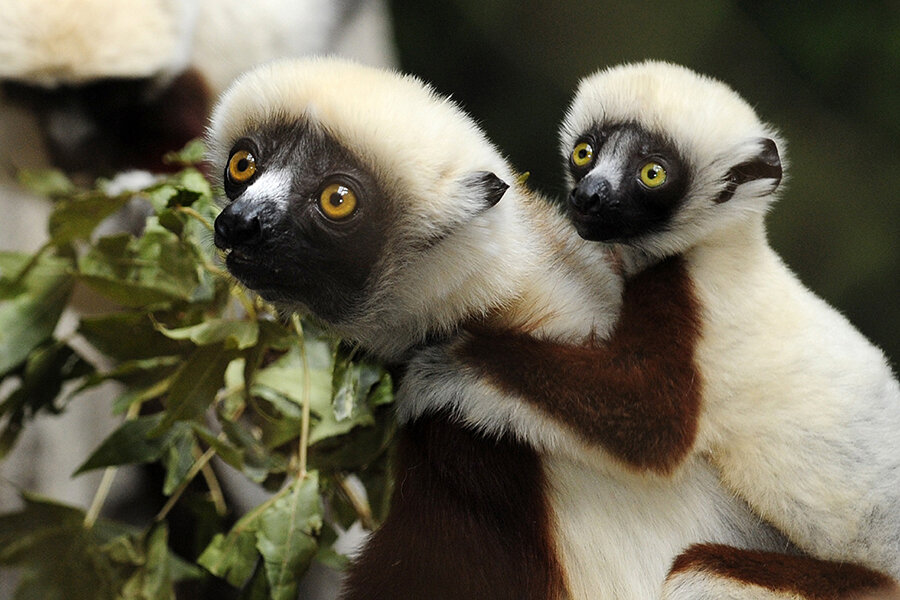Can we stop the lemur from going extinct?
Loading...
Will the lemurs go the way of the dodo?
Native only to Madagascar, more than 90 percent of the 106 known lemur species are under threat – a huge increase from 2008, when fewer than half of the species were at-risk.
In a "Policy Forum" commentary titled "Averting Lemur Extinctions amid Madagascar's Political Crisis" the journal Science, an international team of researchers have proposed a three-year emergency action plan to prevent lemurs from becoming extinct.
This renewed plan is a step to amplify the goals of a plan launched last year to increase public awareness of the grave conservation status of lemurs, Ian Colquhoun, one of the authors of the paper and an Assistant Professor of Anthropology at University of Western Ontario told the Monitor.
The primatologists proposed a total budget of $7.6 million for conservation actions in 30 priority sites in Madagascar.
Unlike continental species, lemurs tend to occupy small ecological niches. In an area inhabited by dozen lemur species, for instance, some might be fruit specialists, some would eat only leaves, and others would be active only at night, says Dr. Colquhoun
Because of this specialization, lemurs' habitats are very limited, and are becoming even more so thanks to deforestation and illegal logging. Lemurs are also routinely hunted for their meat, further threatening their existence, said researchers.
And lot of problems emanate from the political instability in the region, researchers noted in the paper.
"The creation of new protected areas has continued despite political instability brought on by the unconstitutional change of government in early 2009. However, this process has been slowed by a breakdown of government presence and control in many regions, exacerbated by suspension of funding for environmental programs by most international donors in the wake of the political crisis," according to the paper.
Madagascar is one of the poorest countries in the world, and a large part of the island has an agrarian economy consisting of mostly peasants and farmers, Colquhoun says. The challenge is to reach out to them and draw plans that could benefit them as well as the lemurs.
This is where ecotourism can come in, as lemurs represent Madagascar’s most distinctive “brand” for tourism, said researchers.
This model could be based on the ecotourism efforts underway to save mountain gorillas in Rwanda and Uganda.
It could give a boost to the economy, but there needs to be a delicate balance between boosting tourism and simultaneously preserving their habitats. A community-based approach where tourists could live with the locals and pay money to observe these rare species, Colquhoun says. "The growth cannot be sudden and exponential," he adds.
Other conservation efforts include working with local communities and encouraging long-term research – on areas such as ethnoprimatology (a study of interactions between humans and other primates) – in critical lemur sites, said researchers.






